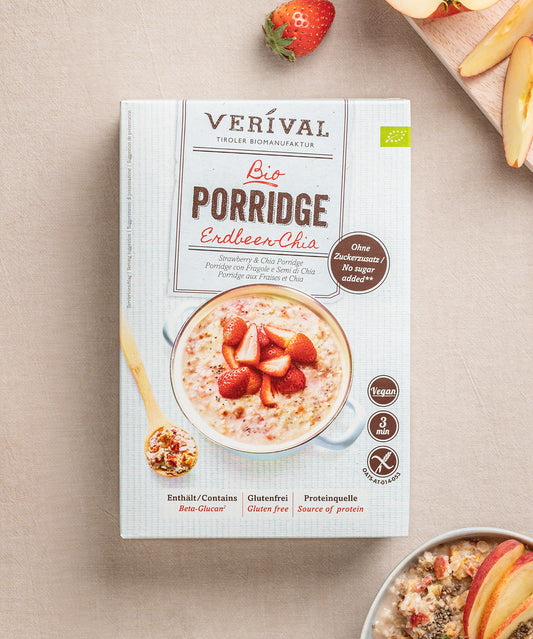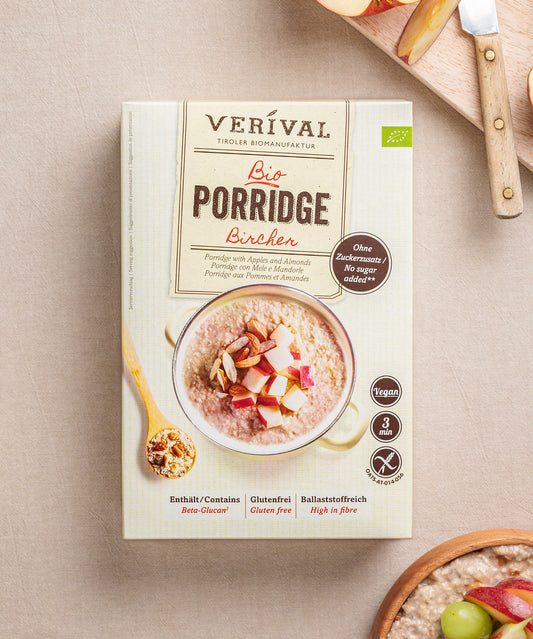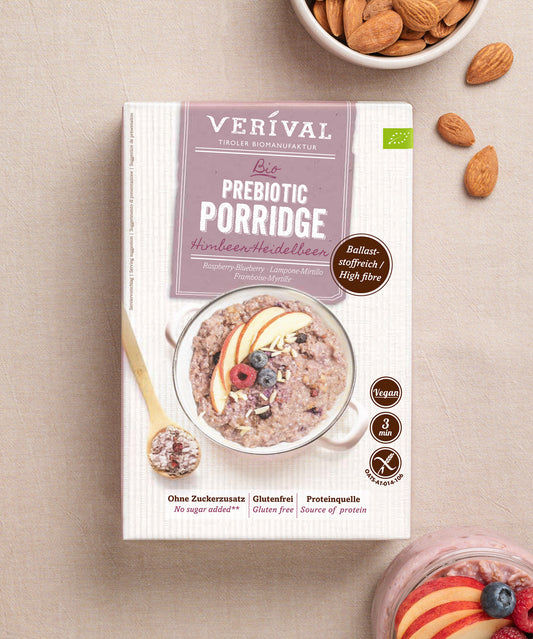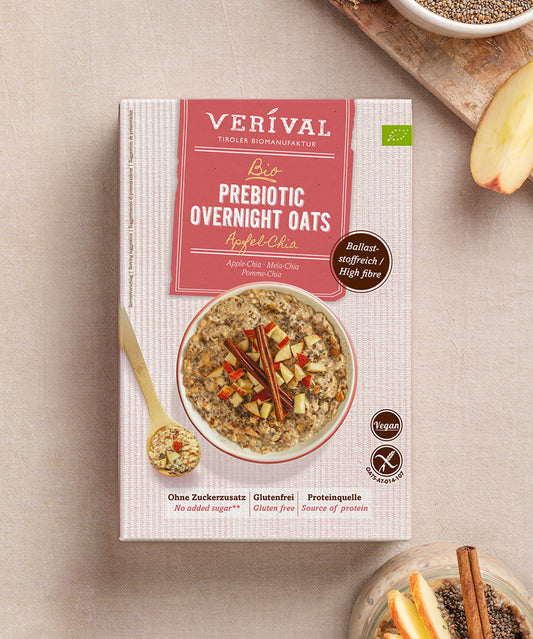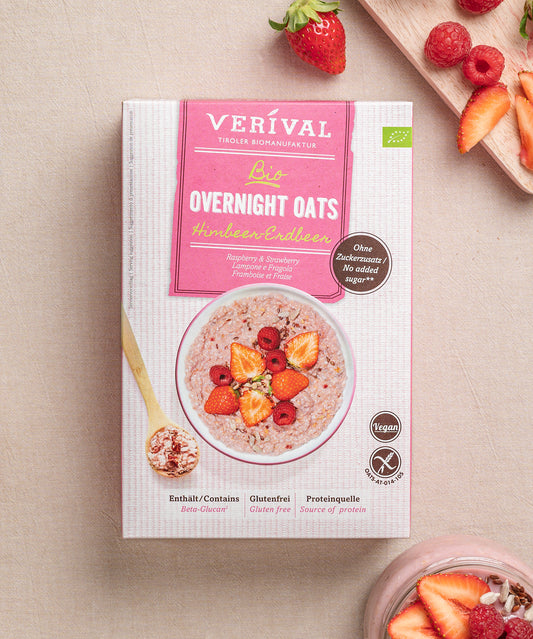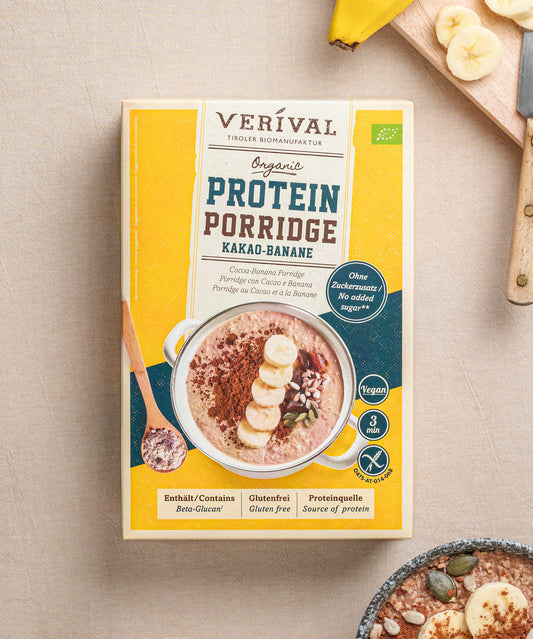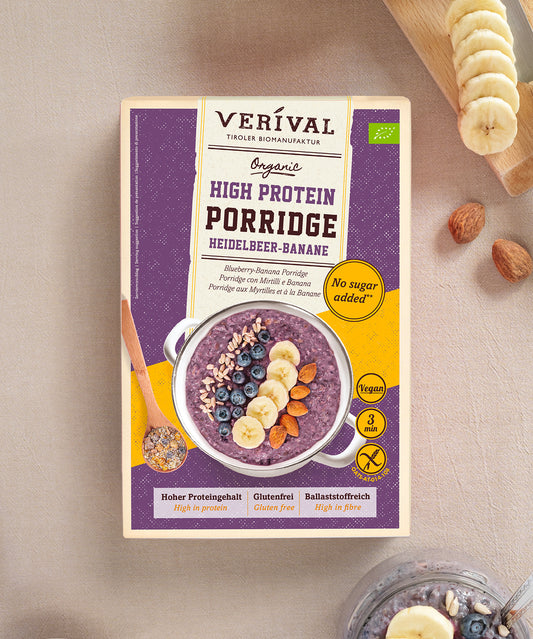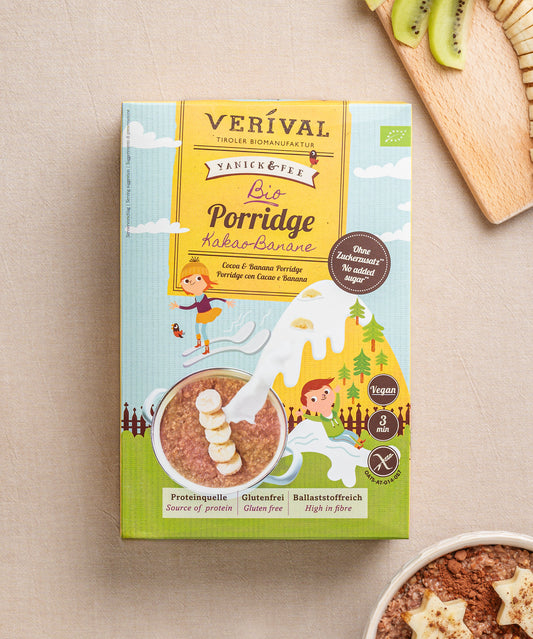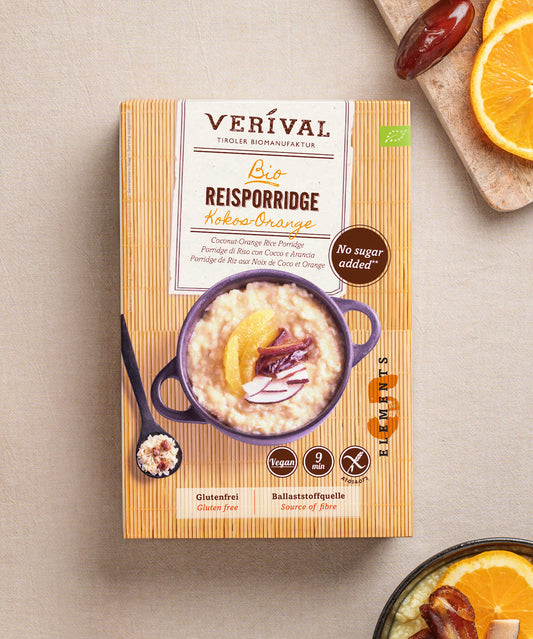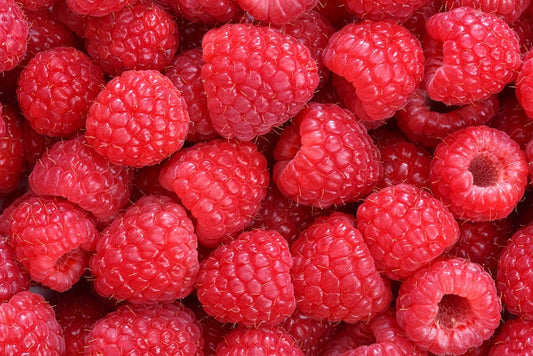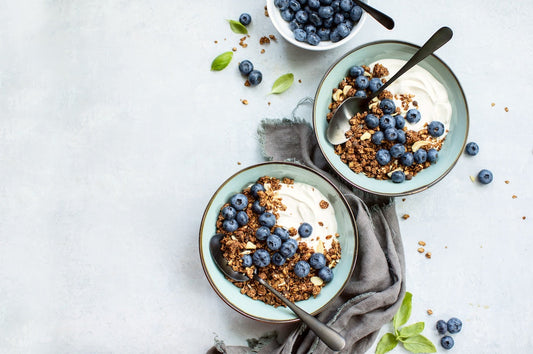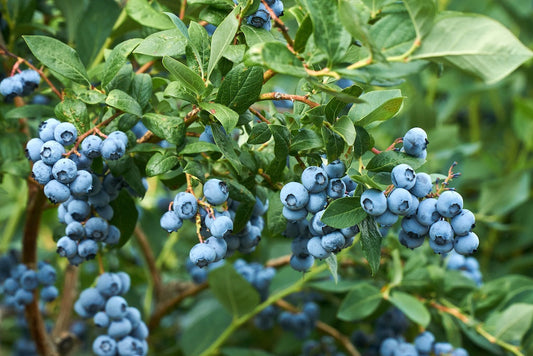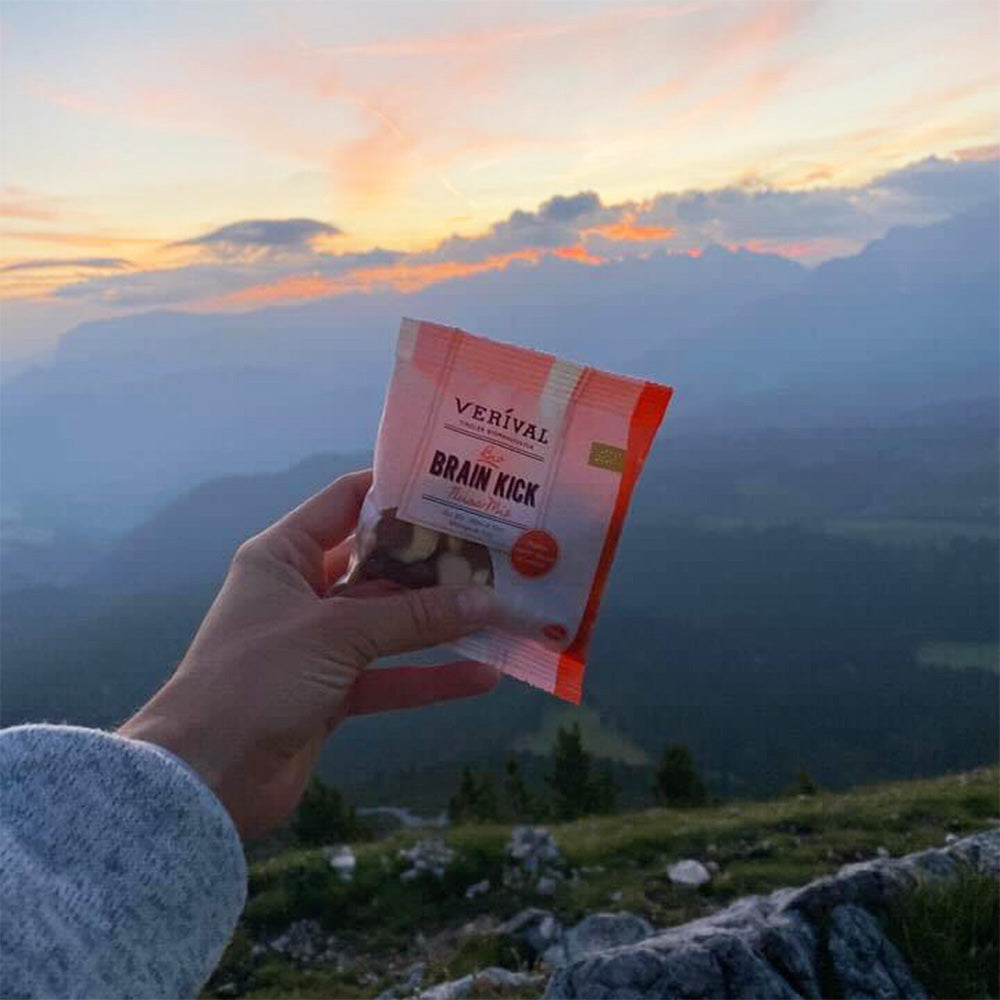‘I'm lactose intolerant’ – almost everyone has heard this sentence before. This is no wonder. The number of people with lactose intolerance is steadily increasing. In German-speaking countries, about 15 per cent of the population cannot tolerate lactose, or can only tolerate it in small amounts. Worldwide, the figure is an incredible 75 per cent. By way of comparison, only about one per cent of the world's population suffers from coeliac disease, i.e. gluten intolerance.
In this blog post, you can find out why so many people are lactose intolerant, what causes lactose intolerance and what you should look out for if you are affected.
Lactose-free breakfast from Verival – discover it now
What is lactose intolerance anyway?
Lactose, also known as milk sugar, is a type of carbohydrate found in milk. Whether from humans in the form of breast milk or from animals such as classic cow's milk, lactose is a component of it.
Normally, milk sugar is broken down by the enzyme lactase in the small intestine and then utilised. However, if this process does not work properly, symptoms such as abdominal pain, diarrhoea or nausea can occur – this is referred to as lactose intolerance.
What causes lactose intolerance?
There are various causes of lactose intolerance. However, the reason for the symptoms is the same. As we have heard, lactose is broken down in the small intestine – but if this does not happen, or only to an insufficient extent, the lactose enters the large intestine undigested and is only broken down there. This produces intestinal gases, which subsequently lead to symptoms.
The reason for the discomfort is therefore a faulty digestion – or, more precisely, the body of the person affected lacks the enzyme lactase.
What types of lactose intolerance are there?
Depending on the cause of the intolerance, we speak of primary or secondary lactose intolerance.
Primary lactose intolerance
There can be many reasons why the body only produces a small amount of lactase. Some people have a hereditary condition known as primary lactose intolerance that is present from birth or develops over the years.
Secondary lactose intolerance
Other illnesses can also trigger an intolerance – this is known as secondary lactose intolerance. In most cases, this is caused by damage to the mucous membrane of the small intestine, which can occur as a result of inflammatory bowel disease or other food allergies, for example. However, this damage is reversible – so as the mucous membrane regenerates, the intolerance can subside and even disappear completely.
What are the symptoms of lactose intolerance?
The intestinal gases produced when lactose is broken down can trigger a variety of symptoms that may occur about an hour or two after a meal. Bloating, abdominal pain and even general discomfort are common. But nausea and vomiting can also occur in particularly sensitive people – though this is rare.
Am I lactose intolerant?
If you recognise some of these symptoms, it's best to start logging your meals and symptoms. This may sound like a lot of work, but it will help you to make a diagnosis.
What to do if the symptoms are mild
If your symptoms are only mild, you can try reducing dairy products for a period of at least two weeks, or ideally eliminating them completely. If your symptoms go away, you can assume that you are lactose intolerant. To find out how severe your intolerance is, you can now start to gradually increase your lactose intake again. If the symptoms recur, you know that it was too much and can use this as a guide in future.
What to do in the event of severe symptoms
If you experience persistent or very intense symptoms, it is best to see a doctor and then get professionally tested. In some cases, it may also be helpful to seek nutritional advice.
I'm lactose intolerant – now what?
You are lactose intolerant and now you are wondering how to deal with it? The first step is to determine the severity of your intolerance. To do this, you can either get a professional to test you or check it yourself. Once you have found out how severe your intolerance is, you can start changing your diet.
An overview of foods containing lactose
Depending on the severity, you should try to eat a lactose-free or low-lactose diet. The following table shows you which products you should avoid and which have a low lactose content:
| Lactose-free 0 g/100 g |
Low lactose content < 1 g/100 g |
Mean lactose content 1-4.5 g/100 g |
High lactose content > 4.5 g/100 g |
| Dairy-free products | Butter | Potfen | Milk |
| Plant-based foods | Hard and sliced cheese | Cottage cheese, cream cheese | Whey |
| Lactose-free milk(products) | Sour cream, Schlagorbers | Coffee Cream | |
| Soft cheese | Yogurt, kefir | Drinking cocoa |
Discover lactose-free porridges from Verival
Where else lactose is hidden
You should take a look at the ingredients, especially with ready meals or heavily processed foods. These products are often enriched with lactose to improve the consistency or taste, as lactose is an excellent binding agent and flavour carrier.
Foods that often contain lactose although you would not expect it are barbecue and salad dressings, pastries, desserts or even frozen meals such as creamed spinach. Therefore, you should take a close look at the ingredients and make sure that neither the term ‘milk sugar’ nor ‘lactose’ appears in them.
What are the alternatives to classic dairy products?
It is completely normal to be a little overwhelmed at first glance by the table above. It may seem as though there is almost nothing you can eat without worrying. However, this is not the case – for many products, there are already low-lactose or even lactose-free alternatives available.
Substitutes for a lactose-free diet
Yoghurt, for example, can be replaced with plant-based alternatives made from soya or coconut. Sour cream, whipping cream and other similar products can also be substituted with lactose-free or even vegan products. Products made from oats or rice are particularly suitable for this.
And you don't have to go without milk for your cornflakes either – you can easily make a plant-based drink yourself or buy it in any supermarket.
How can I recognise lactose-free products?
Products with a lactose content of less than one gram per 100 grams are usually labelled as ‘lactose-free’ – there are no clear legal regulations, but in most cases this definition applies, as misleading the customer would be punishable.
These products usually also indicate a low lactose content by labelling it ‘lactose-free’. Clearly recognisable symbols are also often used.
However, if you don't want to rely on this or generally want to avoid dairy products as much as possible, you can opt for vegan products. Vegan products are usually clearly labelled and do not contain any animal ingredients. This means that they are free of milk or dairy products and are therefore safe to eat. At the same time, plant-based products are better for the environment, as the life cycle assessment of plant-based drinks compared to cow's milk shows.
Discover vegan breakfasts from Verival
What do I need to bear in mind when following a low-lactose diet?
If you avoid dairy products mostly or even completely due to your lactose intolerance, there are a few things you should be aware of.
For example, dairy products are excellent sources of calcium and are therefore responsible for healthy bones and teeth, among other things. Therefore, you should try to incorporate calcium-rich foods into your diet. Vegetables such as broccoli, celery and leeks are particularly rich in this important mineral. But some types of fruit such as kiwis, raspberries and blackberries also have a high calcium content.
The protein content is also extremely high in dairy products – however, in plant-based milk alternatives, the protein content is often very low because they usually consist mostly of water. So you should take special care to consume enough protein. You can easily achieve this with vegan protein sources such as nuts or a wide variety of seeds. These foods are easy to incorporate into your diet, for example by using them as a topping for a smoothie bowl or your warm breakfast porridge.
Or you can make your own nut butter, which you can use either as a spread or as a topping for your porridge – here is our recipe for a particularly protein-rich peanut butter:


